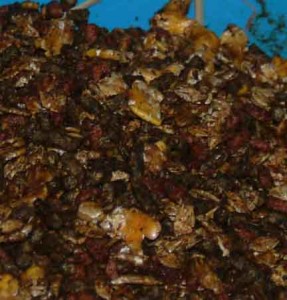Healthy Calf Conference
Follow to stay up-to-date on all Healthy Calf Conference updates. Speaker announcements, sponsorship information, registration announcements, and more.

The purpose of calf starter is to transition the calf from the milk–feeding period to the dry feeding period. Calf starter is very important to healthy rumen development, good body growth and successful weaning of the calf.
Calf starter must be palatable and nutritious. Do not use urea in starter feeds because the calf cannot digest it properly. The energy, protein, minerals and vitamins must meet the requirements of Canada’s Nutrition Research Council (NRC). According to Nutrient Requirements of Dairy Cattle, specifications for dry matter starter feeds include:
Calf starter should be offered around day five in a shallow bucket. Start off with a handful and gradually increase that amount as the calf begins to consume all that is in the bucket. Calves will eat more if they can feel the bottom of the bucket. All buckets should be should be emptied and refreshed daily with clean feed. Keep calves on starter until they achieve 70–80 kg (155–175 lb.) bodyweight, then gradually switch them to the corn over one to two weeks.
Calf starter containing a lot of molasses may pose a problem in the winter as it could freeze. In the summer, it can clump because of the hot humid weather and may attract a lot of flies. Pelleted calf starter can crumble which makes it unpalatable to the calf, so it is even more important to refresh this starter daily.
When calves are consuming 1 kg (2 lbs) of calf starter a day for three consecutive days, the weaning process can begin.
Follow to stay up-to-date on all Healthy Calf Conference updates. Speaker announcements, sponsorship information, registration announcements, and more.
The Codes of Practice are nationally developed guidelines for the care and handling of farm animals. They serve as our national understanding of animal care requirements and recommended practices.